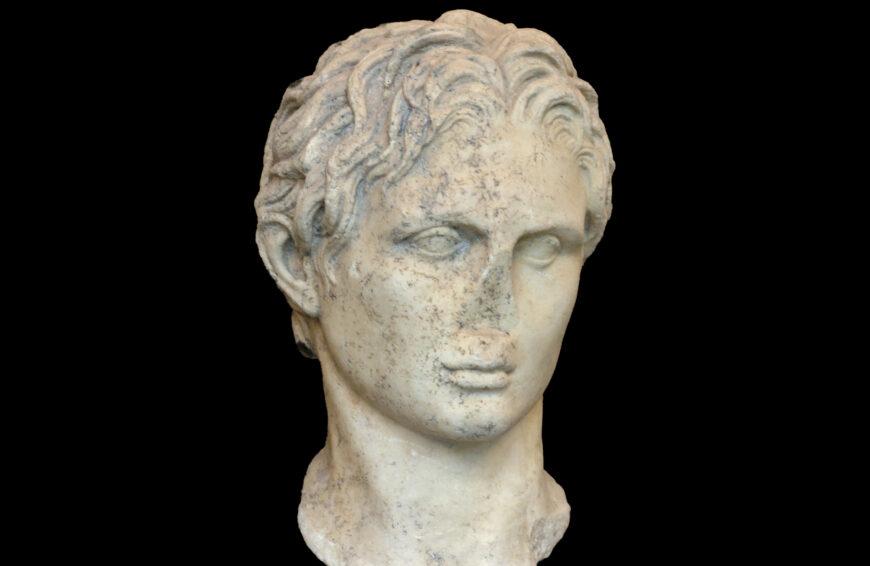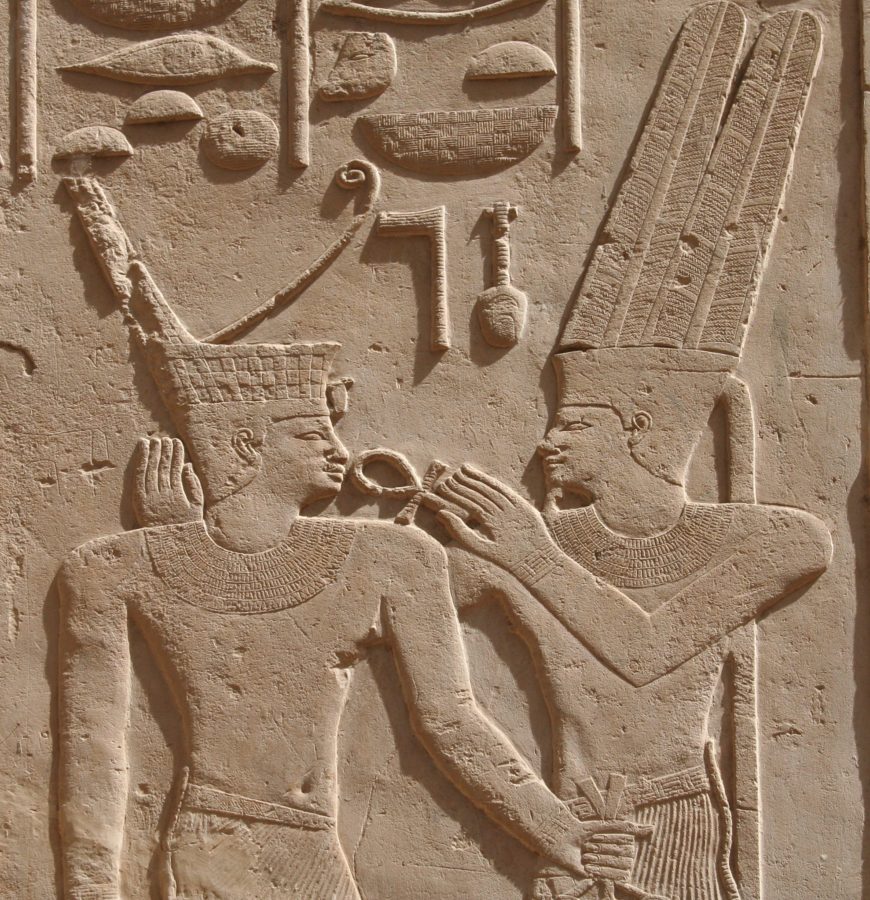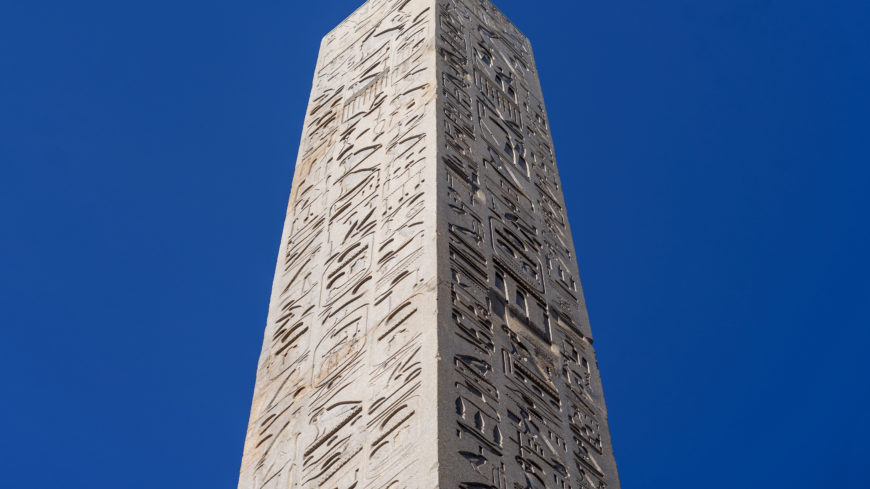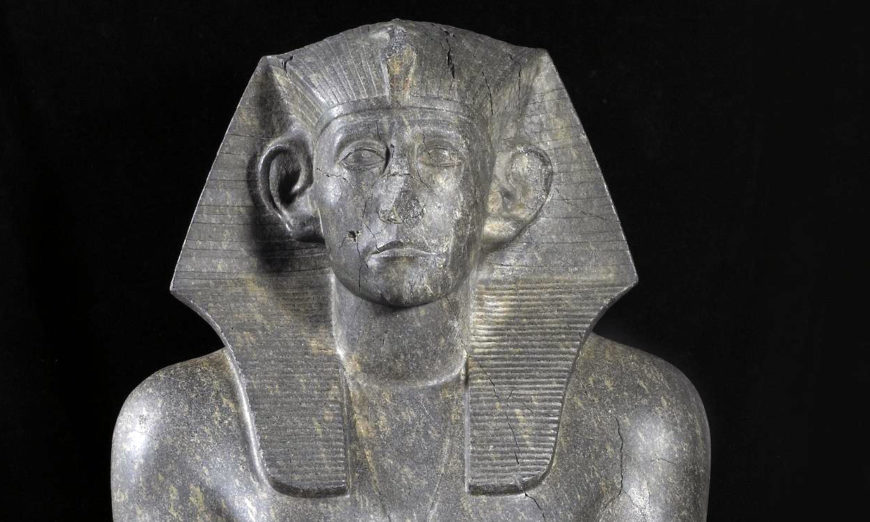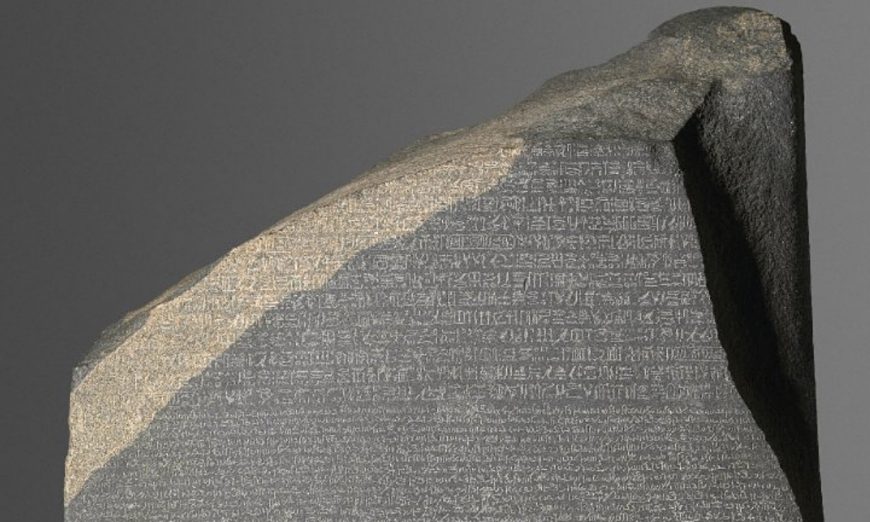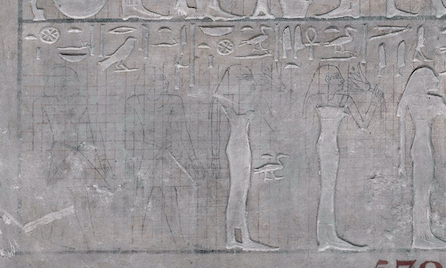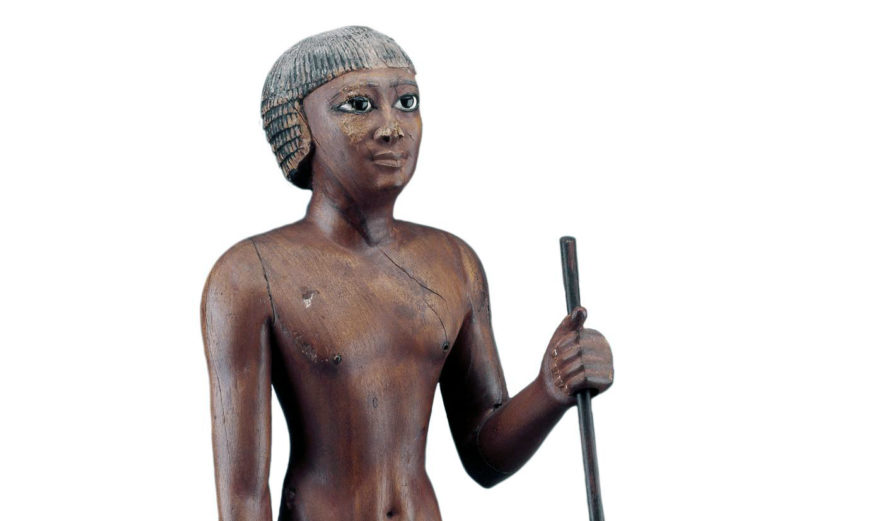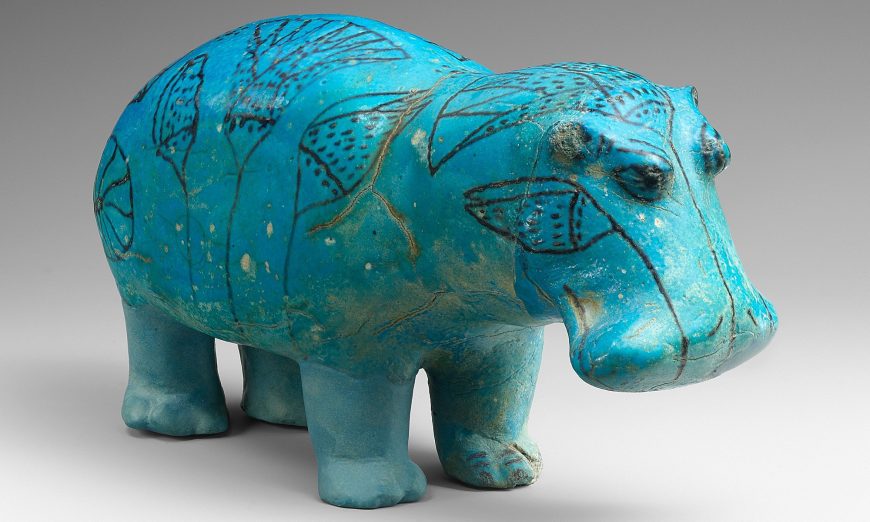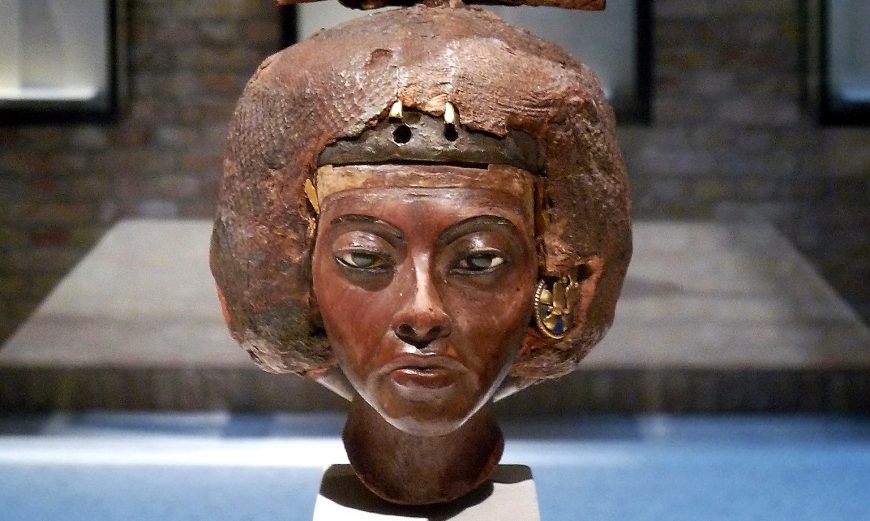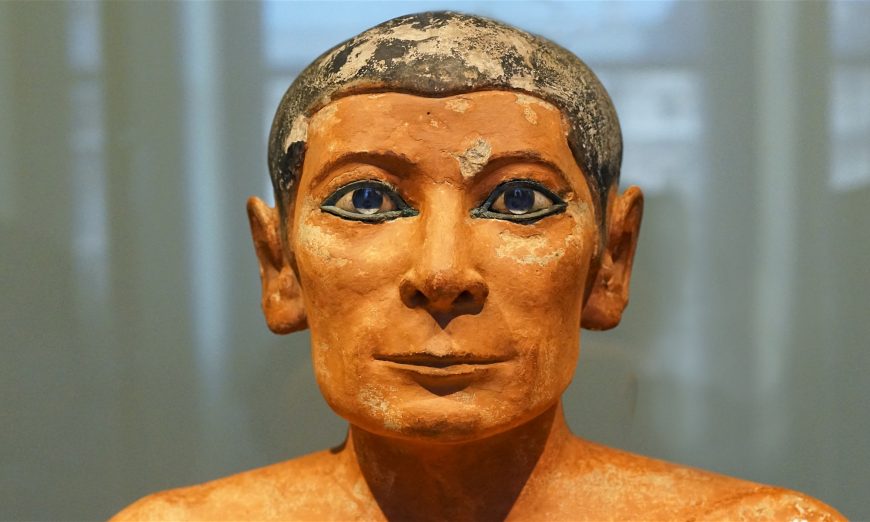Upon becoming pharaoh, Akhenaten revolutionized the religion and artistic style of Egypt—at least until his death.
House Altar depicting Akhenaten, Nefertiti and Three of their Daughters, c. 1350 B.C.E. (New Kingdom, Amarna period, 18th dynasty), limestone (Ägyptisches Museum/Neues Museum, Staatliche Museen zu Berlin)
[0:00] [music]
Dr. Steven Zucker: [0:05] Around 1350 B.C., everything changed in Egyptian art.
Dr. Beth Harris: [0:10] When we think about Egyptian art, we don’t think of change.
Dr. Zucker: [0:12] That’s true. The Old Kingdom, the Middle Kingdom, the New Kingdom, and the transitional periods between, art is consistent for almost 3000 years, but there is this radical break right around 1350 [B.C.], and it’s because the ruler, Akhenaten, changes the state religion.
Dr. Harris: [0:29] He changes it from the worship of the god Amun to a new god, a sun god called Aten. He actually changes his own name to Akhenaten, which means “Aten is pleased.”
[0:43] The key is, he makes him and his wife the only representatives of Aten on earth, and so he upsets the entire priesthood of Egypt by making him and his wife the only ones with access to this new god, Aten.
Dr. Zucker: [0:58] And in fact, after Akhenaten dies, Egypt will return to its traditional religion, so this period is a very brief episode in Egyptian history, but it also marks a real shift in style. This small stone plaque that we’re looking at, this sunken relief carving, which would have been placed in a private domestic environment, is a perfect example of those stylistic changes.
Dr. Harris: [1:20] Right, it would have been an altar in someone’s home, where they would have seen Akhenaten and his wife, Nefertiti, and their relationship to the god Aten.
[1:29] This has always been one of my favorite sculptures. It’s so informal compared to most Egyptian art. We really have a sense of a couple, and their relationship with one another, and their relationship with their children. Love and domesticity.
Dr. Zucker: [1:45] Let’s take a close look. On the left, you have Akhenaten himself. This is the pharaoh of Egypt, the supreme ruler. You can see that he’s holding his eldest daughter, and he’s actually getting ready to kiss her. He seems to be holding her very tenderly, supporting her head, holding her under the thighs. She seems to be, perhaps, pointing back to her mother at the same moment.
Dr. Harris: [2:05] We see Nefertiti holding another daughter on her lap pointing back to Akhenaten, and yet a third daughter, the youngest one, on her shoulder playing with her earring. I think it’s immediately apparent that there’s something wrong with their anatomy.
[2:21] If we look at the children, or we look at Nefertiti or Akhenaten, we see swollen bellies, very thin arms, and elongated skulls. Forms that have made art historians wonder whether there was something medically wrong with Akhenaten.
Dr. Zucker: [2:35] In fact, we don’t think that there was. We think that this is a purely stylistic break that was meant to distinguish this new age, this new religion, from Egypt’s past.
Dr. Harris: [2:46] Egyptian art had been dominated by rectilinear forms. Here, Akhenaten seems to be demanding this new style dominated by curvilinear forms.
Dr. Zucker: [2:55] Look at the careful attention to the drapery. There is a softness throughout that is in absolute contrast to the traditions of Egyptian art, but in some ways there are elements of traditional Egyptian sculpture.
Dr. Harris: [3:08] Right. We still see a composite view of the body, a profile view of the face, but a frontal view of the eye.
Dr. Zucker: [3:15] Right, or one hip is facing us, but the shoulders are squared with us, so as much of the body is exposed to us as possible while the figures are still in profile. Let’s take a look at some of the iconography here. This little panel really tells us a lot.
[3:30] God is present, Aten is present, here rendered as the sun disk. From that sun — which has a small cobra in it, which signifies that this is the supreme deity, the only deity. Akhenaten was a monotheist. This was in such contrast to the pantheon of gods that traditional Egyptian religion counted on.
[3:54] Here, Akhenaten says, “No, there is only one true god.” We can see the cobra, we can see the sun disk, and then we can see rays of light that pour down. If you look closely, you can see hands at the ends of those rays, except for the rays that terminate right at the faces of the king and queen.
[4:14] There, you see not only hands but also ankhs, the Egyptian sign of life, and so it’s as if Aten is giving life to these two people, and these two people alone.
Dr. Harris: [4:26] Those rays of light are holding those ankhs right at the noses, the breath of life for Akhenaten and Nefertiti. We can see in the throne of Nefertiti symbols of both upper and lower Egypt, indicating that Nefertiti is queen of both.
Dr. Zucker: [4:42] Akhenaten himself is sitting on a simpler throne. It does give a sense of her importance and the fact that they would rule Egypt together.
[4:50] [music]


